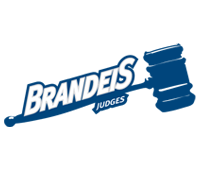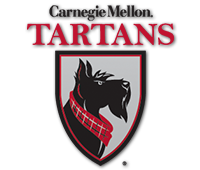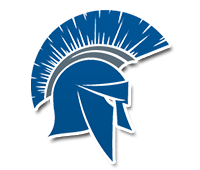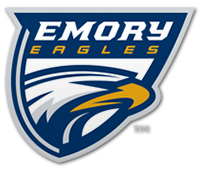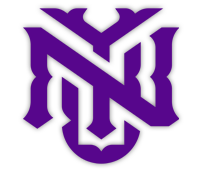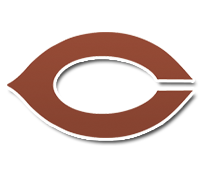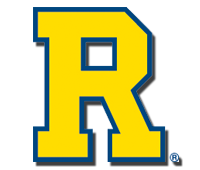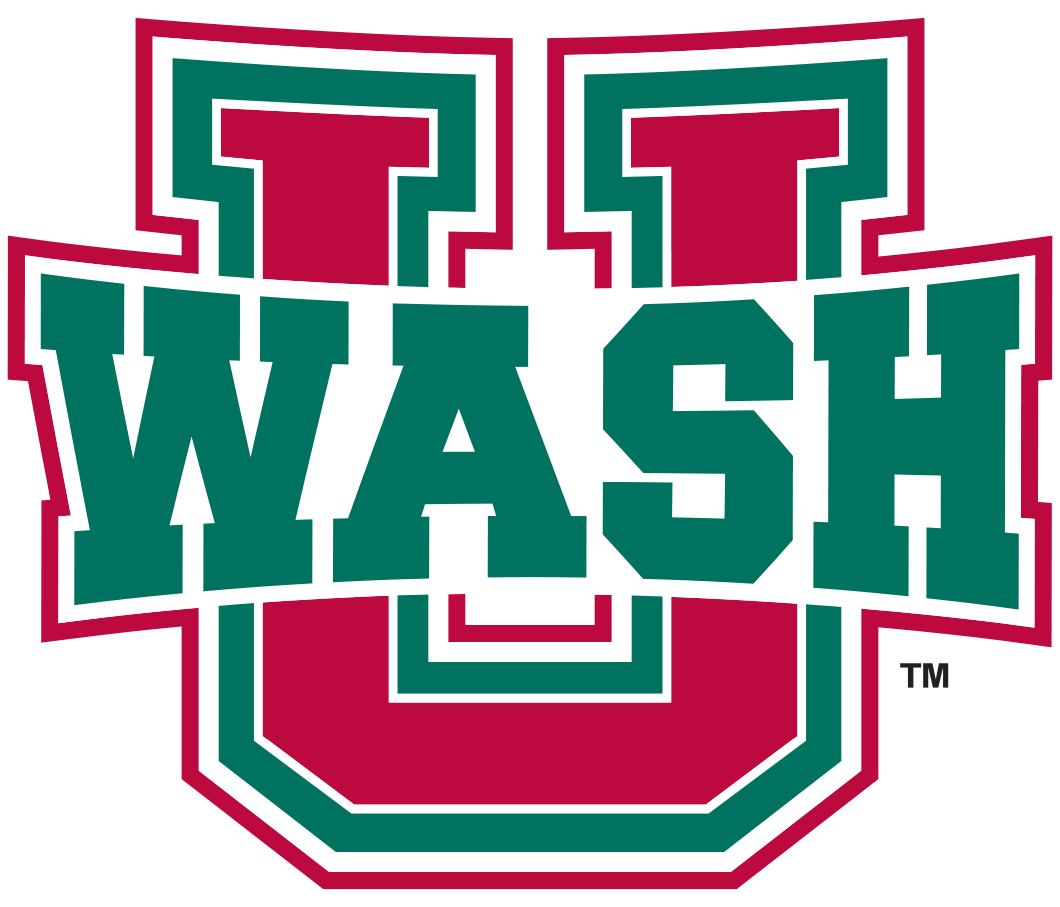
Photos: L, Ken Ono with Madeline Locus Dawsey and Ian Wagner last month in India; R, Andrew Wilson
Emory University Professor Dr. Ken Ono, who works primarily in the theoretical field of number theory and its applications to physics and has worked with multiple national champions, has embarked on an analytic study of training methods for elite swimming.
The Asa Griggs Candler Professor of Mathematics and Computer Science, Ono has put together a feasibility study that involves a collaboration between athletics and the mathematics and computer science department at Emory. The study includes PhD student and former NCAA Division I University of Georgia swimmer Madeline Locus Dawsey and Eagles' head swimming and diving coach Jon Howell, who has led the Eagles to 10 NCAA Division III Women's Swimming and Diving Championship titles and the 2017 NCAA Division III Men's Swimming and Diving Championship title. Dawsey swam in the 2012 and 2016 U.S. Olympic Trials and won a gold medal as a member of the U.S. National Swimming Team in the 2015 World University Games.

Photos: L, Ken Ono with Jon Howell; R, Ken Ono with Andrew Wilson
In addition, Ono served as honors thesis advisor to the Emory swimming program's most heralded student-athlete Andrew Wilson, who communicates regularly with Ono while earning his PhD at University of Texas. He also works with another PhD student in the mathematics department in men's tennis assistant coach Ian Wagner, who captured the 2013 NCAA Division III Men's Tennis Doubles Championship with Elliot Kahler in 2013. Previously, Ono mentored 1992 U.S. Olympic track and field athlete Gwynneth Coogan, who competed in NCAA Division III at Smith College and California Institute of Technology and ran in the 10,000 meters at the 1992 Summer Olympics in Barcelona, Spain.
Although studies have been done with other sports, most notably in cycling, swimming has remained elusive in terms of applying high-level science to performance enhancement. The swimming study will begin with Emory mathematics and computer science students, which includes several members of the swimming and diving program, developing new theoretical tools in the mathematical theory of wavelets and to design experiments with the idea of applying these theories to help enhance high performance swimming.
Wavelets have been a hot topic in the mathematical community, culminating with French mathematician Yves Meyer capturing the 2017 Abel Prize, often referred to as the Nobel Prize of mathematics, for his role in establishing the theory of wavelets. From dramatically improving the accuracy, efficiency, and speed in Magnetic Resonance Imaging (MRI), to being the basis of JPEG 2000 standards in digital photography, to detecting forgeries in art, the mathematical theory of wavelets has become one of the key scientific advances in the past 20 years.

Photo: Ken Ono with astrophysicist Neil deGrasse Tyson and comedian Eugene Mirman
"We are lucky that wavelet theory has recently had advancements," Wagner remarked. "The advancements can be applied to computational analysis and data compression. In fact, the winners of the Nobel Prize in physics in 2017 (Rainer Weiss, Kip S. Thorne, and Barry C. Barish) detected gravitational waves using wavelets. We can use wavelet theory to analyze our results." That discovery confirmed a longstanding speculation of Albert Einstein.
"We think of our project as swimming's version of a recent 2017 Norwegian study conducted in preparation for next month's Winter Olympics," Ono said. "This study (and others) strongly suggest that inertial sensors have been perfected to the point that they can be put to the test in a pool study."
Once the tools have been developed, the school's computer science students (Ken's son Sage is an NCAA champion swimmer and majors in computer science at Emory) will need to develop the software that will be used to analyze the data collected from varsity swimmers. Ideally, these tools will help develop new training methodology.
To read more about Ken and Sage Ono:
Sage and Ken Ono: Swimming and Mathematics at Emory University
"What makes Ken's project special is that he is in a unique position where he understands the swimming and the mathematics extremely well. Researchers who do studies like this are rarely on the cutting edge of mathematics," Wagner said. "Ken is an athlete (he was a cyclist and recently has been running triathlons and trail running) and Sage is obviously an accomplished swimmer so Ken is connected through that as well." In fact, Ono is now in training for the 2018 U.S National Aquathlon Championships with the goal of earning a spot on the USA Triathlon Team for his age group (50-54). His training partner is current Emory assistant swimming coach John Petroff, who earned nine All-America honors for the Eagles from 2007-10 and is competing in the 30- to 34-year old age group. The U.S. Aquathlon Championship will consist of a one-kilometer open water swim followed by a 10-kilometer run as part of the first USA Triathlon Multisport National Championships in Miami in November.

Photo: Ken Ono being interviewed at 2016 XTERRA Trail Run World Championship in Hawaii
"Ken has a remarkable career of addressing complex, enduring challenges in mathematics through his combination of technical virtuosity, creativity, and collaborative thinking. He is also widely known on this campus and throughout the mathematics community as a generous, active mentor to students and younger mathematicians," commented Michael Elliott, Dean of Emory College of Arts and Sciences and Charles Howard Candler Professor of English. "Simply put, I cannot think of anyone better to lead a project like this one — both because of his scientific abilities and because of his collaborative leadership. He is someone who is eager to contribute to the Emory community beyond his department, and I am thrilled that he has found a partner in Coach Howell."
Challenges do lay ahead, particularly given the combination of water and high-tech electronics, but those who have worked with Ono believe the study will yield important information. "I don't doubt anything Ken says he is going to do, no matter what it is," said Wilson, who would receive assignments from Ono and video chat with him while taking a year off from school to train for the 2016 Olympics. "I have no idea what we will end up learning from the study, but I am sure we will learn something. There just hasn't been much research like this. We can't learn from what other people have done and adjust. It is starting a fairly new area of study so there will be a decent amount of trial and error."
"I was really excited when Ken first mentioned the idea to me," Dawsey recalled. "I had never thought of doing an analytic study in swimming. It is completely new, something I have never seen. Of course, we need a waterproof sensor and the engineering has been improving recently. We will need to experiment to get enough data to study with the math wavelets."
"Ken's knowledge and his passion for research are exciting," added Emory Assistant Vice-President/Clyde Partin Sr., Director of Athletics Michael Vienna. "You can only get excited talking to him. He knows his subject, he has done his research, and is pursuing this study. One of the things about Emory is that we have a lot of talented people who are passionate about what they are doing and are continually looking for ways to get better. That is what a university of higher learning should be about."
Although the adage "if you want something done, give it to a busy person" could apply to all those on the project, the others agree that Ono takes it to another level.
"I still don't know how he sleeps," laughed Wilson. "With all the things he has on his plate, how does he sleep? He works out one to two hours a day too. I would be in his office for half an hour and four people would stop by. I don't know how he does anything but meet with people." Wilson saw Ono's attention to detail in a personal way when he took one of his courses. "My first introduction to him was my sophomore year. There was a required math course for math majors that is an introductory course to more upper level math. The course was incredible and I loved him from the first day. He made a point to know all his students, their names and something about each of them. He would remember that interesting fact two or three years later. He puts other people before himself."
"I am pretty productive. Then I look at him and think I need to find a way to do more," Howell laughed. "He is incredible in all that he is able to do in a day, week, or month. He has so many irons in the fire."
Among the major goals of the project are to develop a comprehensive theory of each of the four main swimming strokes and use collected data to develop methods for assessing, enhancing, and improving athletic performance.
"I have taken a lot of trips to Colorado Springs and trained with several Olympians," Dawsey said. "Amanda Weir (three-time Olympic medalist) was my training partner for a couple of years. I was thinking I have trained just as hard as Olympians, but I didn't know what I could do to be at that level. If I had sensors measuring my acceleration, deceleration, and power, I could have seen what I could have done better."
"Collecting data that you can trust will be helpful," Wilson stated. "Ken has found some trustworthy gyroscopes. When he first talked to me about the study, I was skeptical at first. I thought about something we tried at Emory that you put in your cap. They were okay, but not that great. I believe we will learn new things from this study."
"If it works, we would be able to measure power input in different muscles," Dawsey added. "Measuring differences between different swimmers and muscles would let swimmers know what their weakness was."

Photos: Ono with Dawsey and Wagner filming television special for the Indian science television program Eureka
Another long-term goal would be to replicate the study for other sports. "It could work in any sport. You just can't carry over the techniques," Dawsey commented. "The movements swimmers make are different than other sports. You would have to design a study particularly for each sport."


